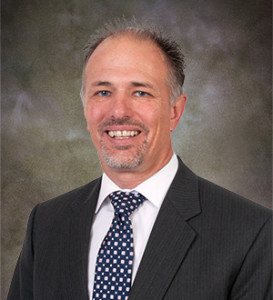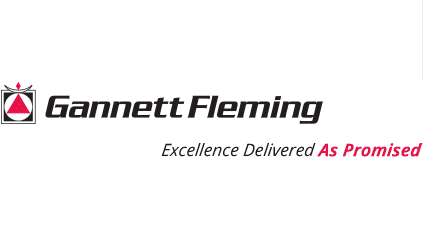I was fortunate to get the opportunity to sit down with Gannett Fleming President Bob Scaer to discuss the January 1st launch of their major reorganization which he has endearingly named “Change is Good.” As bad a connotation that change has in the A&E industry, Bob has managed to successfully pull off a major re-engineering of the firm’s reporting structure and process, and garnered buy-in at all levels of the organization. This was an 18-month effort that included alarge number of Gannett employees, and largely driven by strategic initiatives to grow the firm over the next 10 years.
It is easy to instantly get excited when talking with Bob about this huge initiative. Bob has been the major force behind “Change is Good,” and staked the future of the firm’s success on its adoption. His passion for successfully leading this enormous project is contagious – making what is obviously a very complex venture seem optimistically doable. This success would not have been possible without the total buy-in, commitment, and tireless hours by key leadership in the firm to help shape and drive this initiative.

Bob Scaer, President, Gannett Fleming offering planning, design,
technology, and construction management services
This massive reorganization involved realigning all of the firm’s systems and management reporting processes away from an office profit and loss structure to one that is a regional business line approach. With just over 2,200 employees and 65 offices, this undertaking required a lot of work behind the scenes to communicate the firm’s strategy which is based on greater collaboration and a deeper emphasis on client success.
“Mostly, I felt that we had evolved into something that was a little bit too much focused on the organization itself,” Bob explained. “With 65 offices, you can drift into serving the office mentality. I was looking to shift us to more of a client focus.”
As many firms in the industry have experienced, having an office-oriented reporting and management structure can create silos where groups are not incentivized to collaborate and help each other succeed. Certainly with 65 offices, it had become difficult for Gannett Fleming to implement their market-driven strategy and ensure that on a regional basis, all of their key staff were focused on communicating and driving business as a group. Now, offices take a smaller role and the office manager position no longer exists. Bob describes the need to be “more agile, the world is changing very fast. Opportunities change fast. We need to be able to move faster, so we need to be organized in a way that will give us that agility. And I think this does just that.”
Part of the basis for the design of their new structure is a renewed approach to strategy. “We have balanced strategy and execution. We put a lot more emphasis on strategy than we ever had in the past. We got a lot more people involved – it was pretty substantial.”
His biggest concern with launching this program was getting adoption and buy-in
Bob expressed that his biggest concern with launching this program was getting adoption and buy-in. He personally spent a great deal of time working with groups of employees at all levels to ensure that there was clear communication about his vision for the future. He seemed incredibly pleased at how well it had been accepted so far, despite the fact that many management roles had to be changed or eliminated.
In looking at Gannett Fleming’s web site, they describe themselves as “not a typical engineering firm…you will find the solution to whatever challenge you face.” When asked about how Gannett Fleming is different, Bob describes the process of surveying more than 100 of their clients to discover why they were selected and what their feeling was in working with them. The words on their web site come straight from their client’s own experience and testimonials. “We are very fortunate, says Bob Scaer proudly. “After 100 years, Gannett Fleming is still privately owned. From the very beginning our culture has been about putting the client first, and delivering the professional services they need; it’s what we do and it’s who we are.”
Bob was concerned with making such a massive change to the company, which included restructuring of their management reporting chain-of- command. With Bob’s guidance, senior leadership was very cognizant and mindful that any organizational change could negatively impact the Brand promise of the firm. “What we don’t want to become is like every other engineering firm. We took great pains on how we approached ‘Change is Good’ so that we maintain the special culture that has always existed, and that we don’t become the Walmart of engineering, which is happening a lot in our industry.”
 Gannett Fleming has invested a significant amount in training their project managers with a focus on measuring results
Gannett Fleming has invested a significant amount in training their project managers with a focus on measuring results
As I wrote about extensively in my book, “Find the Lost Dollars,” a culture rooted in client satisfaction and technical excellence can have challenges with profitability. Very often with an emphasis on keeping the client happy at all costs, the technical staff feel compelled to not charge for extras which can have a very negative impact on project profitability. Gannett Fleming has invested a significant amount in training their project managers to try and avoid this industry culture trap.
They are very focused on measuring results, and along with “Change is Good,” they have implemented all new metrics and reporting mechanisms to ensure that they are able to manage their new organizational structure. As an ISO 9001 firm, they are very focused on quality, processes and profitability. They measure profit by project manager, and project budget overruns triggers a process in the firm to evaluate the root cause.
“Change is Good” puts their ability to innovate on steroids
Innovation has played a huge part in Gannett Fleming’s strategy and Bob is very passionate about it. “It’s all about delivering value. I want our clients to hire Gannett Fleming and trust they are going to get better value than our competitors. How you do this is through innovation. It is part of the culture of our firm.” Bob hopes that “Change is Good” puts their ability to innovate on steroids.
In looking towards the future, Bob will stay focused on ensuring that their reorganization efforts are successful and start to drive the kind of growth they expect. They strive to maintain their culture, and while they plan to do acquisitions to achieve much of that growth, they look for targets that have the cultural alignment and values needed to ensure their success.
Bob expects 2016 to be a good year for Gannett Fleming, with a better bottom line than last year. With a higher backlog than they have ever seen in the history of the firm, they are positioned to have one of their best years yet. I promised to check in with Bob this time next year to see how “Change is Good” has taken hold. Based on what they have put in place, my bets are on Bob all the way.
JOIN THE RAISE YOUR VALUE AUDIOBOOK LAUNCH TEAM
Help us get the audiobook off the ground and you'll receive the following benefits:
- Be among the first to hear the audiobook and give feedback
- Invitation for you and your leadership team to attend an exclusive web training to learn and discuss how to implement the 5-Step RAISE Your Value Formula in your firm
- Up to 20% discount on the RAISE Your Value online workshops for 12 months
- Corporate discounts on bulk orders of books
- Exclusive invitation to join us for our RAISE Your Value Audiobook Virtual Launch Party!
- Invitations to participate in other live and virtual events, workshops, book signings and other educational opportunities
More From the Find the Lost Dollars Blog...
5 TOP BUSINESS CHALLENGES A&E FIRMS FACE IN 2024
The business environment for A&E firm is changing due to growing competition, fee pressure, technology advances and hybrid work arrangements. Most A&E firms struggle to adapt to the fast pace of change. In working with A&E firms of every size and...
Increase Revenue with no Extra Work in 12 Months: The RAISE Your Value Fee Accelerator Program
We are excited to announce the launch of our new program – the RAISE Your Value $1M Fee Accelerator kicking off in January. This blog post will provide information about the program, the results you can expect to achieve and how you can be one of a small group of...
Strategic Advantage: Harnessing the VQ Assessment for A&E Excellence
In today's competitive landscape, architecture and engineering (A&E) firms face numerous challenges when it comes to differentiating themselves, maintaining profitability, and cultivating a company culture that truly embodies their values. In my newest book, RAISE...




